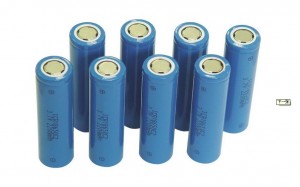By Ben Stowe, “Sound & Lighting Guru”
In today’s world convenience and portability rule. Our appetite for wireless devices is rapidly growing, and with it the need to power these wireless devices… wirelessly. As I began to prepare for this post, I started to think about all the batteries I use on a daily basis. In my car is not only the lead-acid car battery, but also a battery in the key fob to unlock the doors, and probably a few others for the car’s computer that I’m not aware of. Then there is my cell phone, my laptop, my broadband card, and alas… even the tablet I’m writing this on right now!
That’s not where it ends, of course, if I listed every battery I encountered on a daily basis I’d have to include my presentation clicker, the TV remote, wireless mouse, wireless alarm sensors, garage door opener, and about a hundred other items.
In the entertainment world quick sets and strikes mean operational efficiency, greater design flexibility, and happier everybody. Wireless lighting has dramatically improved life for event lighting providers, but it comes with it’s own set of challenges. In order for the wireless device to remain, well, wireless… the battery has to be able to do it’s job reliably.
Despite the fact that most of us interact with batteries on a regular basis, few really understand what’s going on during the charging and discharging process, and how our actions impact the functionality and reliability of them. To make matters worse, we want brighter, more powerful lighting fixtures, and we want them to be as lightweight as possible. Fortunately, we’re a long ways behind engineers at places like Apple who have greater challenges. Their batteries need to endure far more charge cycles, and they’ve created devices that people have a really hard time putting down. Not only that, but their mantra is “smaller & lighter” with every generation, despite more powerful processors and greater video resolutions.
Ok, ok… just get on with it, right? You want to know how to properly feed and water your batteries, don’t you. Alright, first, a little more chemistry.
The batteries addressed in this article are Lithium-Ion (Li-Ion), the same type you’ll find in your laptop, cell phone and tablet. Wireless lights draw quite a bit more power, and subsequently have much larger batteries. Li-Ion batteries are really nothing short of a modern miracle, but they have some emotional problems that we have to accept in trade.
They’re pretty finicky about temperature. They really don’t like to be too hot, or too cold. This creates a storage challenge for those of us that live in a place like Northern Minnesota, where temperatures can get to -40 in the winter, or those who live in places like Phoenix. I’m pretty sure it gets over 200 there, at least it seems that way everytime I go there. That’s a long ways outside the battery’s comfort zone. They like to be as close to 68º F as possible. Bear this in mind while transporting and storing and your batteries will thank you.
Another thing to note about Li-Ion batteries, is that unlike other battery types we have used in the past (Ni-Cd, etc), they do not need to be fully discharged prior to recharging. In fact, that’s about the worst thing you can do for the battery. They also don’t like to be fully charged either. Like I said, emotional problems! Ni-Cd batteries had to be fully cycled to avoid a “memory”. While Li-Ion batteries are not subject to this type of memory, they can develop a “digital memory” that can cause them to give false readings to battery level indicators, so after 20 charges or so something closer to a full discharge / recharge might be in order. Then go back to partial charges. Some batteries have amazing record keeping abilities, like the ones in laptops. They can tell you things you didn’t dream possible about how well you cared for them. Unfortunately, most of the batteries used in low-cost (sub $2,500) wireless lighting fixtures do not have these features.
Most manufacturers supply recommended chargers (often built right into the wireless lights themselves) that will charge the batteries to a pre-designated point. A “full” charge as indicated by the “ready” light may not be a “full” charge, and that might not be a bad thing. A “fuller” charge will lead to a longer runtime, but a shorter service life. Each manufacturer has to decide what is more important to their users. Lower cost chargers can lead to reduced runtime, premature failure, and even explosion or fire!
Many lighting professionals have an “off-season” where their equipment is not used as frequently. If your lights will be going into storage for a few months, don’t send them off with a full charge. It will speed up the degradation of the Li-Ion battery, and shorten it’s useful life. It’s best to charge them between 40% and 50% and ensure that the connected equipment is fully in the off state. Li-Ion batteries have a very low self-discharge rate and will live like this quite happily for months at room temperature.
If the storage is for an extended amount of time, it’s a pretty good idea to check on them from time to time, restore the charge to that mid-level, and let the batteries know you still love them. That helps with the emotional problems.
Lastly, it’s important to remember that while a properly cared for Li-Ion battery will give you hundreds of charge cycles, all batteries deteriorate with age. They deteriorate whether they are used or not. That’s life. They’re batteries. They are a “wear” item that will need to be replaced from time to time. We’re simply trying to get the most out of them for the longest we can.

